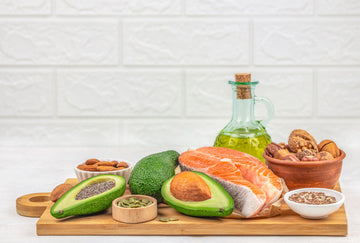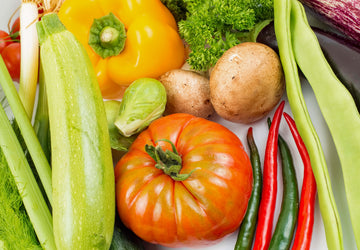The ketogenic diet has gained a lot of attention in recent years because it aims to put the body into a special metabolic state called ketosis. In ketosis, the body uses fat and so-called ketone bodies as its primary energy source instead of relying on carbohydrates. To achieve this state, daily carbohydrate intake is severely restricted, which is a big change for many. But how many carbohydrates are actually allowed on this diet, and how can you incorporate them into your daily routine?
A thorough understanding of carbohydrate intake and its importance for the keto diet is key to successfully implementing this diet.
The carbohydrate content in the keto diet
The ketogenic diet focuses on drastically reducing carbohydrates. Typically, an amount of 20 to 50 grams of carbohydrates per day is recommended. This limit corresponds to about 5 to 10 percent of total daily calorie intake. However, the exact amount can vary from person to person, depending on individual factors such as age, gender, physical activity and metabolism.
At the beginning of the keto diet, it is often advisable to keep carbohydrates particularly low in order to get the body into ketosis faster. However, over time, this amount can be adjusted depending on how the body responds and what the goals are.
Where are carbohydrates hidden in food?
Carbohydrates are not only found in obvious foods like bread, pasta or sweets, but also in less obvious sources. For example, root vegetables like carrots or sweet potatoes may contain more carbohydrates than leafy vegetables like spinach or arugula. Dairy products like yogurt or milk may also contain sugar, which increases the amount of carbohydrates.
Nuts and seeds are also good sources of fat, but they contain varying amounts of carbohydrates depending on the variety. Almonds, for example, have fewer carbohydrates than cashews, and chia seeds contain more fiber than carbohydrates, making them a popular choice in keto cooking.
A close look at the nutritional information is crucial to identify hidden carbohydrates and keep track.
Individual carbohydrate tolerance
Not everyone reacts to carbohydrates in the same way. Some people can consume up to 50 grams of carbohydrates a day and still remain in ketosis, while others fall out of this state at just 30 grams. Individual tolerance depends on various factors such as previous diet, activity level and metabolic rate.
It can be helpful to observe your body closely and, if necessary, measure your ketone levels. This will help you determine the optimal amount of carbohydrates to stay in ketosis.
Integrating carbohydrates into your daily routine
In order to keep carbohydrate intake under control on the keto diet, it is important to plan meals carefully. The focus should be on foods that are naturally low in carbohydrates. Vegetables such as broccoli, zucchini or cauliflower are ideal side dishes and can be prepared in a variety of ways. Avocados and olive oil provide healthy fats, while meat, fish and eggs are high-quality sources of protein.
It can be helpful to keep a food diary or use a food tracking app to keep track of your daily carbohydrate intake. This will keep your diet organized and make it easier to achieve your keto diet goals.
The amount of carbohydrates that can be consumed on the keto diet is usually between 20 and 50 grams per day. This limit helps to put the body into the state of ketosis and keep it there. Conscious handling of food, recognizing hidden carbohydrates and observing individual tolerance are crucial to successfully implementing the diet.
With a thoughtful approach and patience, the ketogenic diet can be integrated into everyday life in the long term.
This article is for informational purposes only and is not intended to replace professional advice from a doctor or nutritionist. For individual questions about nutrition or health, please contact a qualified expert.





